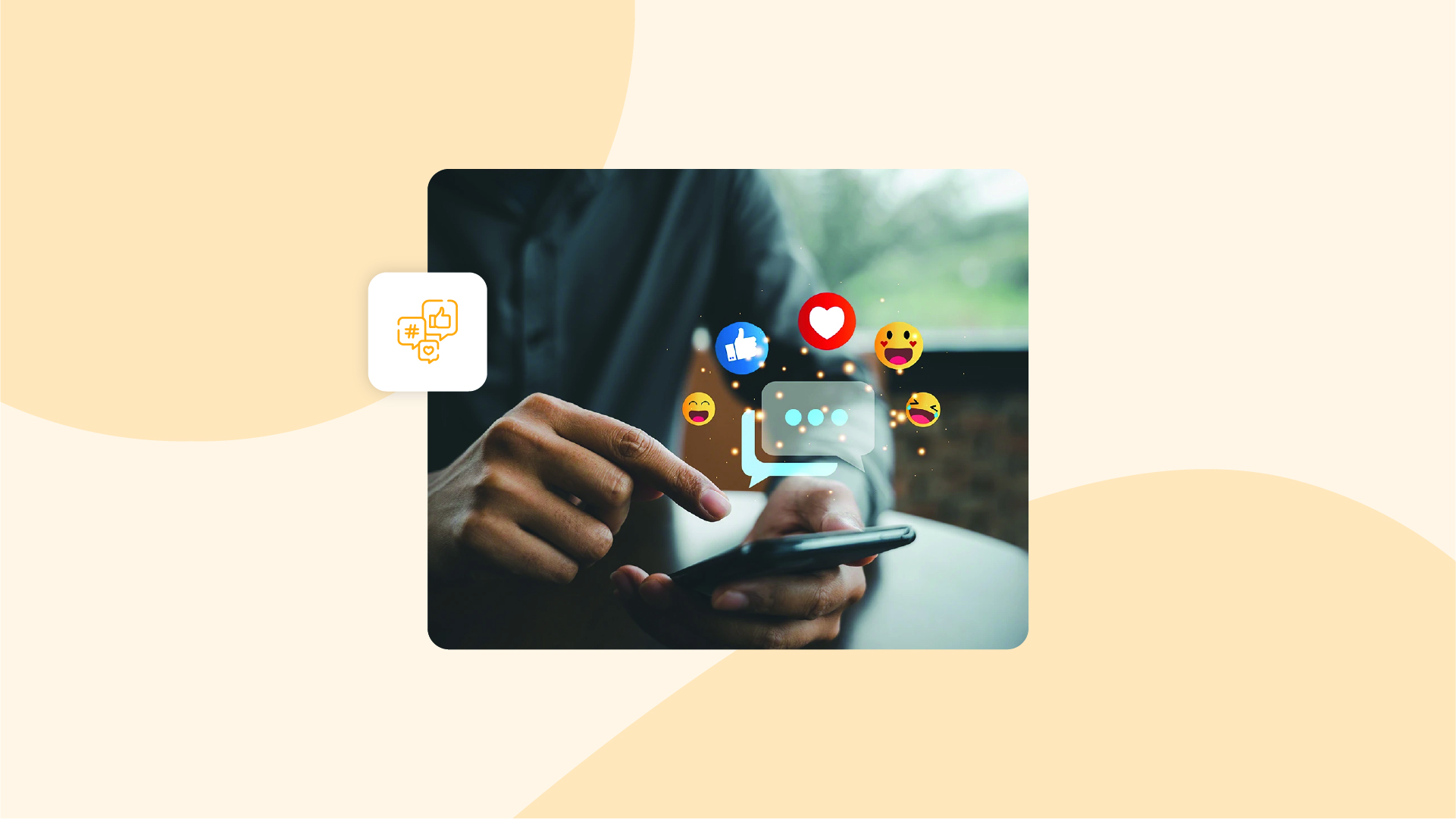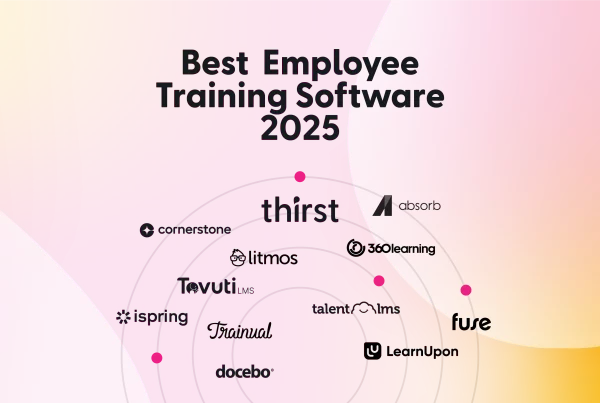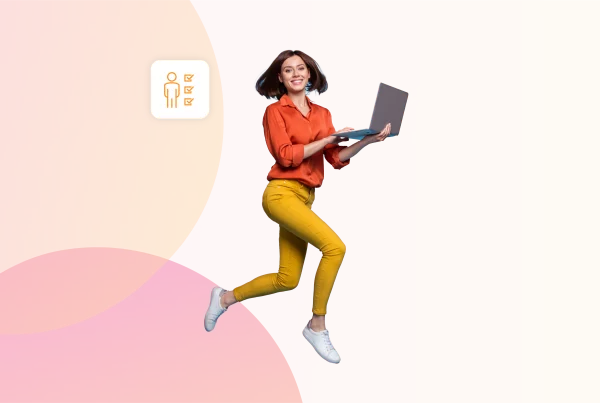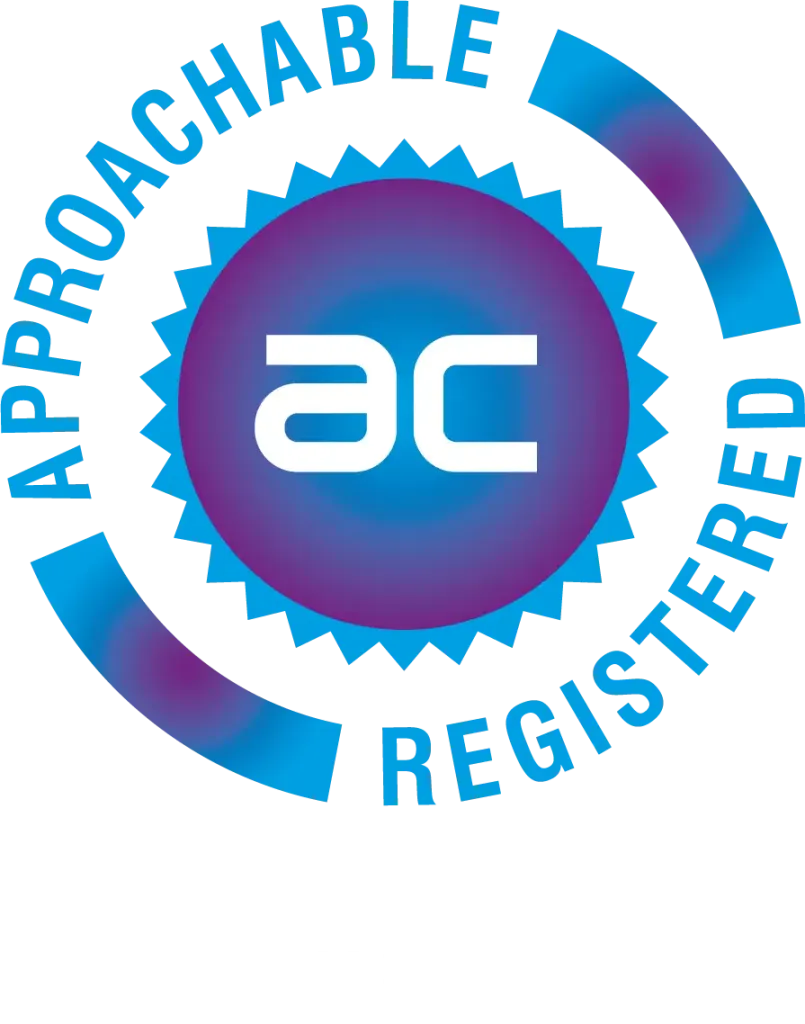Have you ever found yourself mindlessly scrolling through social media, losing all sense of time as you dive deeper into the endless stream of posts and updates? 👀
If this sounds like you, you’re not alone! Especially if, like many people, you’re easily lured in by snappy content that you can whizz through in seconds. ⏩
This got us thinking: What if learning could be just as engaging and addictive as your favourite social media platform? 💭
Imagine your learners feeling that same curiosity and levels of engagement whenever they start a new learning course. 🤔
Stay with us…
2024 is the new era of L&D, and it’s time to wave goodbye to dull and uninspiring learning and hello to a new way of learning that’s as irresistible as checking your Instagram or TikTok feed! 🙌🏻
At Thirst, we believe this is absolutely possible.
Keep on reading to discover how to make your learning journey as addictive as social media.
But first…
Why is social media just so addictive?
Social media addiction is driven by several psychological and neurological factors that exploit the brain’s reward system. 🧠
Here are the 10 reasons that contribute to its addictiveness…
1. Dopamine Release & Reward System 👍🏻
Social media platforms are designed to trigger dopamine release in the brain, the same chemical involved in feelings of pleasure and reward. Every like, comment, or share provides a small dopamine hit, reinforcing the behaviour and encouraging users to keep engaging with the platform.
2. Variable Rewards & Intermittent Reinforcement 🧑🏽
The unpredictability of social media rewards (likes, comments, new followers) mimics the mechanics of slot machines. This variable reinforcement schedule keeps users checking their notifications and feeds compulsively.
3. Social Validation & Peer Approval 🧑🤝🧑
Humans have an inherent need for social validation and acceptance. Positive interactions on social media, such as likes and positive comments, fulfil this need, making users feel valued and appreciated.
4. Fear of Missing Out (FOMO) & Constant Updates 💬
The endless stream of updates and notifications creates a fear of missing out on important events, trends, or conversations, compelling users to stay connected and engaged constantly.
5. Social Comparison & Highlight Reels 📽️
People tend to share highlights of their lives on social media, leading others to compare them unfavourably. This can create a cycle of low self-esteem and increased engagement as users seek validation to counter negative feelings.
6. Ease of Access and Habit Formation & Mobile Accessibility📱
With smartphones, social media is accessible anywhere and anytime, making it easy to form habits. The constant accessibility means that even brief moments of boredom can be filled by checking social media.
7. Personalisation and Targeting & Algorithmic Content 📣
Advanced algorithms curate content to match user preferences, making the feed highly engaging and tailored to individual interests. This personalisation increases the time users spend on the platform.
8. Social Networks📱
The more people use social media, the more valuable it becomes to each user. The need to stay connected with friends, family, and professional networks ensures ongoing engagement.
9. Emotional Triggers & Content Variety 😆
Social media content often evokes strong emotional responses, such as laughter, anger, shock or sadness. These emotional triggers can enhance engagement and make the platform more compelling.
10. Escapism & Distraction from Reality 🌎
Social media can serve as an escape from real-life problems and stressors, providing a temporary distraction and a sense of relief.
How to engage Gen Z learners the right way
How to make learning as addictive as social media
Ever wondered why you can spend hours on social media without even realising it, but learning for just 30 minutes feels like a marathon?
The secret lies in how social media captures our attention and keeps us returning for more.
But don’t worry—it’s possible to harness those same techniques to make learning just as engaging and addictive.
In this section, we’ll uncover the tricks and tips to transform learning into something your workforce actually looks forward to.
1. Gamification
Points and Badges 💯🏆
Introduce a points system for completing courses, participating in discussions, and achieving milestones. Give learners a sense of achievement and award badges for significant accomplishments.
Leaderboards 🏁
Display leaderboards to encourage friendly competition among employees, motivating them to engage more with learning materials.
2. Personalised Learning Paths
Tailored Content 🧑🏻🏫
Use data analytics to personalise learning paths based on individual employee interests, roles, and career goals. This keeps the content relevant and engaging, just like social media algorithms.
Recommendations ✅
Provide recommendations for courses or modules based on previous learning activities and preferences.
Microlearning 📖
Short, Bite-sized Modules. Break down learning content into short,
manageable modules that can be completed quickly. This aligns with the short attention spans cultivated by social media use.
Daily Learning Nudges 🫵🏻
Send regular, small learning prompts or tips via email or app notifications to keep employees engaged without overwhelming them.
3. Social Learning Community and Collaboration
Create space for employees to share knowledge, discuss topics, and collaborate on projects. Encourage the use of forums, chat groups, and social features within your LXP. Allow employees to recognise and endorse each other’s skills and contributions, similar to LinkedIn endorsements.
4. Interactive Content
Multimedia and Interactivity 🎮
Incorporate videos, interactive simulations, quizzes, and augmented reality (AR) into the learning materials. Engaging, dynamic content can hold attention better than traditional text-based materials.
Immediate Feedback 🗣️
Provide instant feedback on quizzes and activities to keep learners motivated and informed about their progress.
Frequent Rewards and Acknowledgment 🏅
Implement programs that acknowledge and reward consistent learners. Offer tangible rewards, such as certificates, gift cards, or professional development opportunities.
5. Mobile Learning
Accessibility 📱
Ensure learning content is mobile-friendly so employees can learn on the go, making it as convenient as checking their social media feeds.
Learning Apps 📲
Develop or use existing learning apps that allow employees to access content quickly, track their progress, and receive notifications.
6. Emotional Engagement
Storytelling 📒
Use storytelling to create emotionally engaging content. Share success stories, case studies, and real-life applications of the skills being taught.
Relatable Content 🧍🏼
Ensure the learning content is relevant to the employee’s daily tasks and career aspirations, making it more meaningful and motivating.
7. Progress Tracking and Visual Feedback
Dashboards 💻
Implement user-friendly dashboards that allow employees to track their learning progress visually, see upcoming learning activities, and review their achievements.
Progress Bars and Milestones 📊
Use visual indicators such as progress bars and milestones to show learners how close they are to completing a course or achieving a goal.
8. Continuous Improvement and Innovation
Feedback Loops 🗣️
Regularly gather feedback from employees on the learning experience and use it to improve content and delivery methods.
Stay Current 🙋🏼♀️
To ensure relevance and engagement, keep the learning content up-to-date with the latest industry trends, tools, and technologies.
Check out How to build a learning and development strategy in 2024
What are the benefits of addictive learning for L&D?
Increased Engagement and Participation ✅
Higher Course Completion Rates ✅
Active Participation ✅
Enhanced Learning Outcomes & Better Retention ✅
Skill Application ✅
Continuous Improvement ✅
Increased Data-Driven Decisions ✅
Increased Efficiency ✅
How engaged employees will benefit your organisation
Productivity Gains 💡
Well-trained employees perform their tasks more efficiently and effectively, leading to increased productivity.
Quality Improvement 💡
Continuous learning helps employees stay updated with best practices and new technologies, improving the quality of work.
Higher Employee Retention, Satisfaction & Career Development💡
Providing engaging and addictive learning opportunities shows a commitment to employee growth, leading to higher job satisfaction and retention.
Positive Work Culture💡
A strong learning culture fosters a positive work environment, which can attract and retain top talent.
Innovation and Adaptability 💡
Continuous learning enables employees to quickly adapt to industry changes, new technologies, and evolving market demands.
Innovation 💡
Engaged and knowledgeable employees are more likely to contribute innovative ideas and solutions.
Cost Savings 💡
Reduced Turnover Costs: Higher retention rates lower the costs associated with recruiting and training new employees.
Decreased Error Rates 💡
Better-trained employees make fewer mistakes, reducing costs related to errors and rework.
Competitive Advantage & Skilled Workforce 💡
An organisation with a highly skilled and knowledgeable workforce can outperform competitors.
Reputation 💡
A strong learning culture enhances the organisation’s reputation as a leader in employee development.
Self-Directed Learning 💡
Engaging learning platforms empower employees to take charge of their own development, leading to a more self-reliant and motivated workforce.
For more on this, check out our previous article, ‘The learner centred approach and its benefits’.
Skill Diversity💡
Employees are encouraged to explore and develop broader skills, making the workforce more versatile and capable.
7 ways to boost your learner engagement
In Summary
Making your learning as addictive as social media is all about tapping into the same elements that keep you glued to your screen: engagement, interaction, and fun.
By incorporating gamification, creating a supportive community, setting clear goals, and using interactive tools, you can transform workplace learning into something your employees genuinely look forward to.
Thirst is the learning and knowledge platform that your employees will actually want to use.
We have the perfect solution, as our LXP prioritises personalised, engaging, and user-driven learning experiences.
Thanks to a mobile-first dedicated portal, employees can effortlessly access insights, resources, and company-wide expertise, enabling them to build on their skills and learn faster and smarter.
Additionally, Thirst puts social learning at the fore.👌
Thirst lets your organisation share knowledge in fun and engaging ways, such as:
Certificates & Badges 🥇
Employees can showcase their skills and achievements with peers.
Community Spirit 🧑🏻🤝🧑🏻
Encourage your learners to engage more by chatting in the comments and sharing knowledge on the Thirst platform.
Over 100 L&D teams trust Thirst to support knowledge sharing within their organisation. 🫶
Got 2 Minutes?
If your organisation is suffering as a result of disengaged learners, then Thirst can help. 🔥
As an AI-powered learning platform, Thirst is empowering L&D teams big and small to level up learner engagement and create learning experiences designed for the modern learner.
Take the guided tour today and see Thirst in action.
For more e-learning insights, resources and information, discover the Thirst blog.
You may also enjoy:
Learning Curve: Theory, Examples & Formula | What is Cognitive Learning Theory? Definition, Strategies, Benefits | Communication Styles: The 7 Most Common and How to Find Yours







